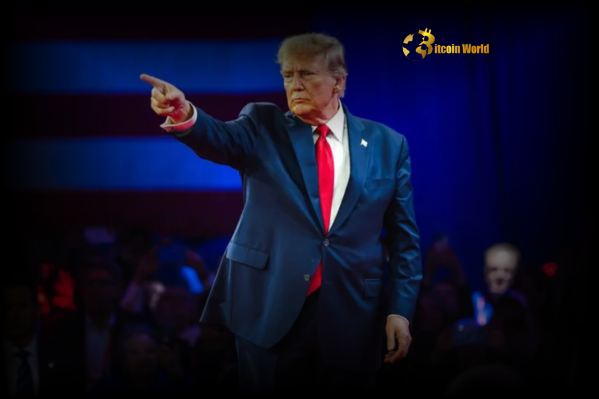The cryptocurrency world is buzzing, and for good reason. A critical juncture has arrived for digital assets in the United States, as lawmakers grapple with the complex task of establishing clear regulatory frameworks. On July 9, the U.S. Senate Banking Committee convened a pivotal hearing, marking a significant step towards shaping the future of the crypto landscape. With a looming September 30 deadline, the urgency to advance comprehensive crypto regulation is palpable, setting the stage for what could be the most impactful legislative changes the industry has seen.
Understanding the Push for Crypto Regulation
Why is there such a strong push for regulating digital assets now? The rapid growth and widespread adoption of cryptocurrencies have brought both immense innovation and significant challenges. While proponents highlight the decentralized nature and potential for financial inclusion, critics point to market volatility, illicit activities, and the lack of consumer safeguards. The Senate Banking Committee’s recent hearing underscored these diverging perspectives, with lawmakers striving to strike a delicate balance between fostering innovation and ensuring market integrity.
The debate isn’t just about control; it’s about clarity. Without clear rules, businesses struggle to innovate, and investors face undue risks. This hearing was a crucial step in defining what those rules might look like, influencing everything from how new tokens are launched to how exchanges operate.
Navigating US Crypto Legislation: A Bipartisan Challenge?
The path to effective US crypto legislation is fraught with political complexities, revealing a clear ideological divide between the two major parties. According to Bloomberg, Republicans on the committee generally advocated for a more flexible, innovation-friendly approach. Their argument centers on preventing overly restrictive rules that could stifle the burgeoning crypto industry, potentially pushing innovation offshore.
On the other hand, Democrats expressed significant concerns regarding existing oversight gaps and potential conflicts of interest within the digital asset space. They emphasized the need for robust frameworks to protect everyday investors and ensure market fairness. This bipartisan tension highlights the difficulty in crafting legislation that satisfies all stakeholders while adequately addressing the unique characteristics of cryptocurrencies.
Key Diverging Perspectives:
- Republicans: Favor a light-touch, flexible regulatory environment to encourage technological advancement and economic growth. Believe innovation thrives with minimal governmental interference.
- Democrats: Prioritize strong consumer protection, market stability, and preventing financial crime. Advocate for comprehensive oversight to mitigate risks associated with an unregulated market.
Addressing Digital Asset Oversight: Why It Matters
At the heart of the Senate’s discussions lies the critical issue of digital asset oversight. Committee Chairman Tim Scott articulated the need for “clear but limited regulation” – a framework designed to protect investors without stifling the very innovation that makes the crypto space so dynamic. This approach seeks to define boundaries and responsibilities for various market participants, from exchanges to stablecoin issuers.
However, Senator Raphael Warnock raised pointed questions about the proposed legislation’s ability to adequately address conflicts of interest within the executive branch and ensure a truly fair market for all participants. His concerns underscore the intricate challenges of applying traditional financial regulations to a decentralized, rapidly evolving technological landscape. Effective oversight is paramount to prevent market manipulation, ensure transparency, and build public trust in digital assets.
Challenges in Digital Asset Oversight:
| Challenge Area | Description |
|---|---|
| Jurisdictional Clarity | Determining which existing regulatory bodies (e.g., SEC, CFTC) have authority over different types of digital assets. |
| Technological Complexity | Keeping pace with rapid technological advancements and understanding new financial instruments. |
| Global Coordination | Ensuring US regulations align with international standards to prevent regulatory arbitrage. |
| Enforcement Gaps | Addressing decentralized entities and cross-border transactions that complicate traditional enforcement mechanisms. |
Ensuring Investor Protection in a Volatile Market
One of the primary drivers behind the legislative push is the urgent need for enhanced investor protection. The crypto market, while offering unprecedented opportunities, has also been characterized by significant volatility, scams, and high-profile collapses that have left many investors vulnerable. Lawmakers are keen to implement safeguards that shield individuals from predatory practices and ensure transparency in digital asset transactions.
The proposed legislation aims to clarify responsibilities for platforms handling customer funds, establish disclosure requirements, and potentially create mechanisms for redress for defrauded investors. This focus on protecting consumers is a bipartisan priority, albeit with different ideas on how best to achieve it. A robust regulatory framework is seen as essential for fostering a safer environment, encouraging broader adoption, and instilling confidence among both retail and institutional investors.
Key Aspects of Investor Protection:
- Disclosure Requirements: Mandating that crypto projects and platforms provide clear, comprehensive information to investors.
- Custody Rules: Establishing secure standards for how platforms hold and manage customer digital assets.
- Anti-Fraud Measures: Implementing stronger mechanisms to detect and prevent scams, rug pulls, and market manipulation.
- Licensing and Registration: Requiring crypto businesses to register with appropriate authorities, ensuring they meet certain operational and financial standards.
What Does This Mean for the Future of Crypto?
The outcomes of these debates in the Senate and the upcoming considerations in the House will profoundly shape the future of crypto in the United States. A clear, well-defined regulatory landscape could unlock significant institutional investment, foster innovation within a regulated environment, and provide much-needed certainty for businesses operating in the space. Conversely, overly restrictive or unclear regulations could stifle growth, push talent and capital overseas, and hinder the US’s position as a leader in financial technology.
The September 30 deadline serves as a critical milestone, urging lawmakers to find common ground. While the journey to comprehensive legislation is complex, the current efforts signal a growing recognition of cryptocurrencies as a permanent fixture in the global financial system. The industry, investors, and innovators alike are watching closely, hoping for a framework that champions both security and progress.
A Glimpse into the Road Ahead:
The House is scheduled to consider its own version of the proposal next week, indicating a parallel effort to address these pressing issues. This dual-chamber approach suggests a strong governmental intent to establish a comprehensive framework, even if the specifics are still being ironed out. The coordination (or lack thereof) between the Senate and House versions will be crucial in determining the speed and efficacy of new regulations.
Conclusion: A Defining Moment for Digital Assets
The ongoing debates within the U.S. Senate Banking Committee represent a defining moment for digital assets. The push for clear, balanced crypto regulation is not merely a bureaucratic exercise but a fundamental step towards integrating this transformative technology into the broader financial system responsibly. While challenges remain in reconciling differing political philosophies and technological complexities, the commitment to establishing robust digital asset oversight and ensuring comprehensive investor protection is clear. The legislative efforts in both the Senate and the House will undoubtedly pave the way for the future of crypto, aiming for a market that is both innovative and secure.
To learn more about the latest crypto market trends, explore our article on key developments shaping digital asset institutional adoption.




